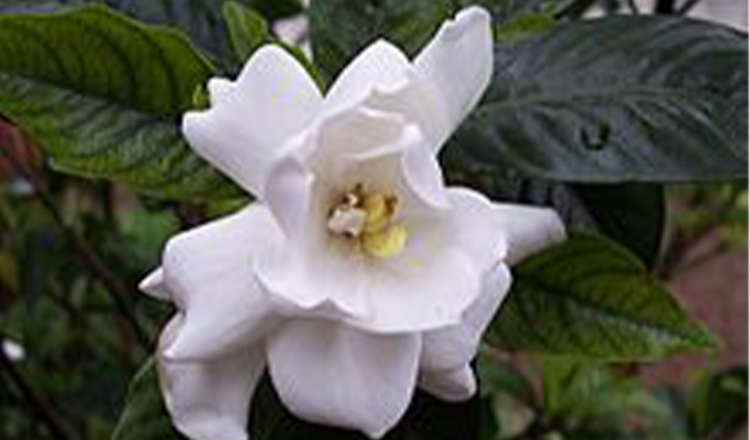Gardenia

Gardenia is a genus of flowering plants in the coffee family, Rubiaceae, native to the tropical and subtropical regions of Africa, Asia, Madagascar and Pacific Islands,[1] and Australia.[2]
The genus was named by Carl Linnaeus and John Ellis after Dr. Alexander Garden (1730–1791), a Scottish-born American naturalist.[3]
Gardenias are evergreen shrubs and small trees growing to 1–15 metres (3.3–49.2 ft) tall. The leaves are opposite or in whorls of three or four, 5–50 centimetres (2.0–19.7 in) long and 3–25 centimetres (1.2–9.8 in) broad, dark green and glossy with a leathery texture.
The flowers are solitary or in small clusters, white, or pale yellow, with a tubular-based corolla (botany) with 5–12 lobes (petals) from 5 to 12 centimetres (2.0 to 4.7 in) diameter. Flowering is from about mid-spring to mid-summer, and many species are strongly scented.
Many of the native gardenias of the Pacific Islands and elsewhere in the paleotropics possess a diverse array of natural products. Methoxylated and oxygenated flavonols, flavones, and triterpenes accumulate on the vegetative- and floral-buds as yellow to brown droplets of secreted resin. Many focused phytochemical studies of these bud exudates have been published, including a population-level study of two rare, sympatric species of the Fiji Islands, G. candida and G. grievei.[4] The evolutionary significance of the gums and resins of gardenias in attracting or repelling invertebrate herbivores, has yet to be explored by ecologists.[citation needed]
